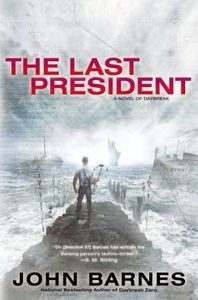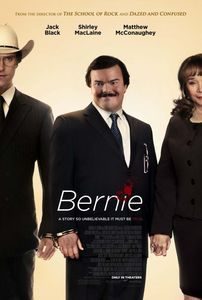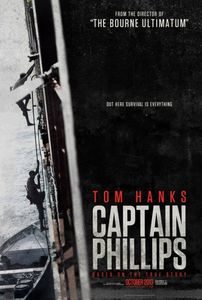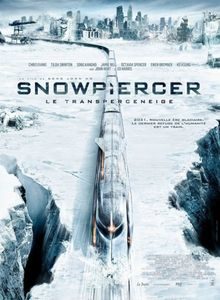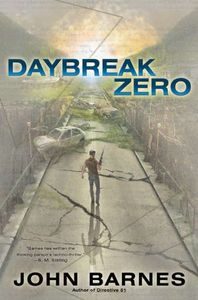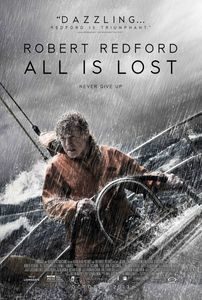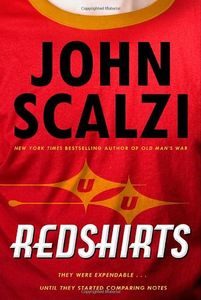Tor, 2014, 672 pages, C$39.99 hc, ISBN 978-0-765-31961-6
When the first volume of William J Patterson’s Robert A. Heinlein: In Dialogue with his century appeared in 2010, my review reflected the critical consensus: While Patterson had better access to source material (including the cooperation of Virginia Heinlein) than anyone else and was able to shed light on hitherto-unknown aspects of Heinlein’s early life, the result was burdened in trivia, lacking in any critical perspective and so utterly beholden to Heinlein as to approach hagiography. Still, complete judgement had to be suspended until the publication of the second volume, which tackled Heinlein’s better-known era, his marriage to Virginia Heinlein and his accession to best-sellerdom. Now that the second volume is here, it turns out that… much of the critical consensus about the first volume also applies to the second one.
The Man Who Learned Better starts in 1948, roughly coinciding with Heinlein’s third wedding and (after a brief detour via Hollywood where he worked on Destination Moon), gradual home-making in Colorado. Much of this second volume presents a detailed minutia of Heinlein’s life, almost day-by-day as he writes stories, attends events, receives visitors and becomes involved in various causes. Eventually, health issues come to the forefront, from the near-death experience he suffered in 1973, to a lengthy period of ill health, culminating in a series of crises that led to his death in 1988. The immensely detailed narrative often borders on the trivial, but the effect becomes strangely hypnotic, almost as if we were living with the Heinleins on a daily basis. Patterson may not have been a particularly gifted writer (see below for a few examples), but the book does have an affecting melancholy to its latter sections, as a couple struggles and copes with health issues that force them to downsize their life before the inevitable end.
Anyone looking for re-interpretation of Heinlein, or expanded commentary of his work will be disappointed: Patterson is a biographer far more than he is a literary critic, and since he hews so closely to the Heinleins’ point of view, he too regards reviewer as either useless (when they praise Heinlein) or malevolent (when they don’t). Noted critics such as Alexei Panshin and H. Bruce Franklin both turn up as recurring villains, to say nothing about Forrest J. Ackerman. While we get a hint as to what caused the enmity (Ackerman misappropriated Heinlein’s work, Panshin had the annoying habit of making inferences about Heinlein’s character, while Franklin was –horror of horrors- a Maoist), the level of vitriol thrown at these three men is almost ridiculous.
Still, it’s a useful clue at what the biography leaves out. Reading In dialogue with his Century, one gets the impression that Heinlein towers over everyone else. That he is never wrong. That he never changes his mind even as the country moved leftward. (Making a mockery of the title “The Man Who Learns Better”) That everyone who went against him was a simple-minded villain. This somewhat charitable viewpoint can’t quite paper over the fact that Heinlein, by all accounts, was kind of an arrogant jerk. (There’s a better word that rhyme with …hole, but it goes against the PG-rating of this site.) Contemporary accounts of his behavior make it clear that if Heinlein was a member of your family, he’d be the insufferable blowhard uncle who’s always right, always willing to harangue family members for their political opinions and usually ends holiday gatherings by leaving early after having insulted everyone. It’s this dimension of Heinlein’s personality that has so fascinated fans for decades, and it’s that aspect that gets the shortest thrift here.
It really doesn’t help that Patterson, being an ardent fanboy, doesn’t just idolize Heinlein (the introduction starts with “Mr. Heinlein”, always a bad sign for a biographer), but seems more than willing to co-opts Heinlein’s opinion into the current right-wing mindset. So it is that Heinlein-extended-by-Patterson gives us gems such as the Baltic states being enslaved by the USSR because they didn’t want to “do what must be done”, unlike the Scandinavian states (has Patterson ever looked at a map?) [P.198]. Such overreach of contemporary political opinion over historical events were easier enough to accept in the first volume of the biography which discussed a time too far away to be controversial, but it proves harder to tolerate with more contemporary events and figures.
Furthering the problem is Patterson, graceless style. There are moments so clumsily written that they jar any reader out of the narrative. Take, for instance, this paragraph about a visit to Rio de Janeiro…
…they drove up Corcovado mountain to see at first hand the monumental Christ the Redeemer status overlooking the steep hills over Rio –and, what the Heinleins may not have realized they were overlooking, Rio’s favelas, some of the worst slums in the world, so legendary in their poverty, violence, and crime that they are still being used as the setting for many “shooter” video games. [P.105]
…and tell me how we can justifiably go from an account of a 1950s trip to a faintly reprobate mention of contemporary video games. Worse yet is the following:
…During the course of the operation, Heinlein received blood transfusions collected from five anonymous donors. Since Robert had an uncommon blood type (universal recipient – Ginny had the even rarer universal donor type), it was almost certain that his life had been saved by the efforts of the National Rare Blood Club he had come across while researching I Will Fear No Evil. [P.320]
As written, this makes almost no sense: Heinlein did have a rare blood type (AB+, roughly 3.4% of the population) but as a near-universal recipient, he could have received blood by nearly everyone –hence instantly debunking the assertion that his life had been saved by the National Rare Blood Club. (Notwithstanding the above blunder, the two chapters covering Heinlein’s year-long involvement with Blood donations reveal much about one of Heinlein’s most underrated life achievements, and stand as a highlight of the book.)
Insufficiently copy-edited, the book also contains a number of typos and small annoying mistakes. Even my casual read of the text showed typos such as “Candian”, or “crities” (this one quasi-maliciously incorrect, as it refers to a section of Alexei Panshin’s web site), or more seriously “November 23, 1963” as the date of JFK’s assassination, when it actually took place on November 22nd.
I hope that my exasperation with the text comes through. In details and in larger interpretation (or rather a lack thereof), In Dialogue with his Century is an immensely well-documented book that nonetheless seems to avoid commenting on the man at its center. Patterson seems to know everything about Heinlein but understand quite a bit less. To see this, the work of two lifetimes, result in a biography that falls substantially shorts of the gold standard of the genre is an exercise in frustration. This biography should have looked at its subject sympathetically but not uncritically. Even today, Heinlein does not need hero-worshipping –he needs someone willing to do what Heinlein himself couldn’t bear to do, which is to explain who he was. Readers can work from inferences (it’s no surprise that a trained military officer would later turn out to be particularly paranoid about threats to US hegemony) but for a biography claiming high that Heinlein avoided simplistic reductions, the fawning uncritical look at Heinlein seems unworthy of the subject. On related matters, we get some information in this volume about Leon Stover, first chosen biographer to Heinlein (and who was later removed from the project by Virginia Heinlein for “unauthorised” enquiries) but little about Patterson’s involvement itself.
Still, it’s a heck of a scholarly work. There’s a lot of stuff in this second volume (from a scholarship aspect alone, I expect it to be nominated for a Hugo next year… even if the book really isn’t as good as it could have been), and I hope that it will become a reference for anyone writing a better biography. It’s also a tremendously rich book to discuss: My list of notes and items of interest from the book easily contains twice as many things I have the time to write about, and as a reviewer this is the kind of book that I love to discuss endlessly, largely because it isn’t perfect and could be improved.
I’m also saddened to report that Patterson died barely a month before this second volume was released. For all the faults we can find with The Man Who Learned Better, his death leaves the ensuing conversation about Heinlein without a crucial voice, and without someone to receive and collect information that could have been raised during this discussion. (As Patterson himself writes in the appendix to his second volume unearthing new information about Heinlein’s early years, “the good stuff” invariably comes out shortly after publication.) Still, Patterson does leave in his wake a massive work of scholarship that will hopefully inspire others to further examination in Heinlein’s life.
I also suspect that this biography will act as another lightning rod in the current fracture within the SF field, the old-guard of fans trying to preserve the memory of Heinlein against younger, more progressive and far more diverse fans. In the old-guard’s minds, In dialogue with his century is an attempt to prove that Heinlein is still of relevance today; that his fiction remains exemplary of what SF means to do, and that his philosophy is still valid. In claiming the good old dodge “I didn’t change my mind, everyone else did”, In Dialogue with his Century moves goalposts, but also servers to illustrate the difference between this old school and the new guard: The old school sees “the country moving to the left” as a sorrowful conclusion, whereas the new guard will perceive older men like Heinlein being naturally left behind.
As far as I’m concerned, I expected this second volume of Heinlein’s life to mark a capstone of sorts to my own dealing with Heinlein. While I found him tremendously influential as a teen and young adult (I’ve been reading his novels since I was nine), I have recently, through various experiences and life changes, come to accept his dwindling relevance to today’s readers: While I still hold tremendous affection for his work, I accept that he will, from now on, be read mostly as a historical writer: even in the SF field, where his influence is unparalleled, I see younger viewers rejecting his novels and claiming other (often newer) writers as relevant. And that’s fine: the genre is not stuck in amber, and we need to move forward. Isn’t it enough to realize that his place in history is assured?
But something happened in reading The Man Who Learned Better: I felt some jitterbug energy coming back, compelling me to go and re-read some of his fiction. So it is that I’m embarking (even with my limited time) on a modest re-reading project: Heinlein’s four Hugo Award-winning novels, from Double Star to The Moon is a Harsh Mistress, stopping by Starship Troopers and Stranger in a Strange Land for completeness. We’ll see if they’re dated, if they can’t stand contemporary social standards, and if they are as I remembered them. I haven’t read them in twenty years; now is the time to revisit them.

